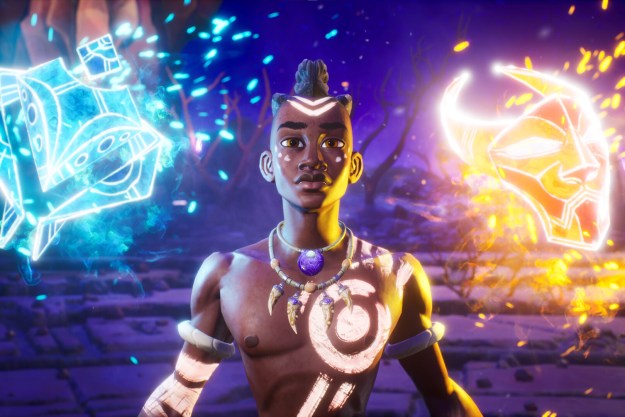Nintendo is a company that likes to iterate on its hardware. An example is the DS, which was redesigned as the DS Lite, DSi, and DSi XL, along with several others such as the 3DS. Now the Nintendo Switch family has expanded, throwing the OLED edition into the mix. The Switch OLED joins the original model and the Lite, giving players a few different options to choose from.
Specifically, the Switch OLED and Switch Lite are vastly different but have a lot in common as well. But which one should you choose? After all, they range in price point and offer different features that may or may not be suited to your playstyle. Here, we’ll break down the major differences between the Switch OLED and the Switch Lite so you can make an informed buying decision.
Recommended reading:
- 8 problems the Nintendo Switch OLED model doesn’t fix
- The Nintendo Switch OLED’s new dock can be purchased separately
- Switch OLED doesn’t include updated Joy-Cons or CPU, Nintendo confirms
Specs
| Nintendo Switch Lite | Nintendo Switch OLED | |
| Size | Approximately 3.6 inches high, 8.2 inches long, and .55 inches deep | 4 inches high, 9.5 inches long, and .55 inches deep (with Joy-Con attached) |
| Weight | Approximately .61 pounds | Approximately .71 pounds (.93 pounds with Joy-Con controllers attached) |
| Screen | Capacitive touch screen / 5.5-inch LCD / 1280×720 resolution | Multi-touch capacitive touch screen / 7.0-inch OLED screen / 1280×720 |
| CPU/GPU | NVIDIA Custom Tegra processor | NVIDIA Custom Tegra processor |
| Storage | 32 GB of internal storage (microSD card expandable) | 64 GB (microSD card expandable) |
| Wireless | Wi-Fi (IEEE 802.11 a/b/g/n/ac) | Wi-Fi (IEEE 802.11 a/b/g/n/ac compliant) |
| Video output | N/A | Up to 1080p via HDMI in TV mode / Up to 720p via built-in screen in Tabletop mode and Handheld modes |
| Audio output | N/A | Compatible with 5.1ch Linear PCM output / Output via HDMI connector in TV mode |
| Speakers | Stereo | Stereo |
| Buttons | Left stick, Right stick, A, B, X, Y, L, R, ZL, ZR, +, – buttons, Control pad, Power button, Volume button, Home button, Capture button | Power button / Volume button |
| USB connector | USB Type-C | USB Type-C |
| Headphone/mic jack | 3.5mm 4-pole stereo (CTIA standard) | 3.5mm 4-pole stereo (CTIA standard) |
| Game card slot | Nintendo Switch game cards | Nintendo Switch game cards |
| microSD card slot | Compatible with microSD, microSDHC, and microSDXC memory cards | Compatible with microSD, microSDHC, and microSDXC memory cards |
| Sensor | Accelerometer / gyroscope | Accelerometer, gyroscope, and brightness sensor |
| Operating environment | 41-95 degrees F / 20%-80% humidity | 41-95 degrees F / 20%-80% humidity |
| Internal battery | Lithium-ion battery / battery capacity 3570mAh | Lithium-ion battery / 4310mAh |
| Battery life | Approximately 3 to 7 hours | Approximately 4.5 to 9 hours |
| Charging time | Approximately 3 hours | Approximately 3 hours |
| DT review | 4/5 stars | 4/5 stars |
| Availability | Available now | Available now |
Design and features

Starting off our list is a comparison of design and features, as this will be one of the primary factors separating the two. The Nintendo Switch OLED can do it all and is able to be used in handheld, tabletop, and TV mode. This is ideal for players who like to mix things up, taking full advantage of the “switch” capabilities. Fortunately, all three of these playstyles have been improved with the Switch OLED.
To be more specific, the OLED uses the same dock as the original Switch system, so if you already have one, you can easily hook it up to your TV to begin playing on the big screen. The great thing about the Switch OLED dock is that it has a built-in LAN port, meaning you can connect an Ethernet cable to it for a more stable internet connection. This is a major benefit, as previously you’d have to use a LAN adapter, which isn’t nearly as convenient.
The kickstand on the OLED is much improved, as well, making it much easier to use in tabletop mode. Instead of the flimsy, thin kickstand on the original Switch model, it now covers the entire length of the backside of the system, featuring multiple degrees of positioning. This means you won’t have to worry about breaking the kickstand and will now be able to use it more comfortably.
In handheld mode, you’ll be able to enjoy even more benefits with the Switch OLED, as well. It features an OLED 7.0-inch screen, offering more vibrant colors overall. This is arguably the most noticeable feature, as its name suggests. If you’re someone who plays in handheld a lot, the OLED might be up your alley.
When it comes to the Switch Lite, it lacks many of the features of the OLED, such as the ability to dock to a TV, a built-in LAN port, and that large OLED screen. The Switch Lite only has a 5.5-inch LCD screen. Though, not all is lost, as the Lite is significantly lighter (go figure), and is easier to travel with because of it. One other thing we love about the Lite is its form factor. It’s a lot smoother all around and feels more comfortable to hold since it’s designed for handheld gaming specifically.
You actually can technically use the Lite in tabletop mode by connecting other controllers to it wirelessly. However, with no kickstand, it’s tough to get this set up, but you can definitely pull it off if you’re creative! (Perhaps leaning it against a pile of books would work.) Another difference between the two is that the Switch Lite has 32GB of built-in memory, while the OLED has 64GB. Both can be expanded using a microSD card.
Controllers

When it comes to controllers, you’ll pretty much be able to use anything made for Switch wirelessly with the Lite and OLED. With the OLED specifically, any older Joy-Con and Pro Controllers can be paired with it, which is great for those who already have Switch controllers in their possession. The Joy-Con controllers that come with the system slide right in on the sides of the Switch OLED, so there’s no need to run out and buy new controllers. Remember, each Joy-Con can function as its own controller when flipped horizontally, meaning two players can enjoy the system right out of the box, so long as you have games that support local multiplayer.
It’s worth noting the OLED comes with white Joy-Con, which is the first time they’ve been available in that color (at least officially). So if you’re into the fancy new white look, you might want to grab the OLED instead.
We also recommend a Pro Controller, which feels and looks more like a traditional gamepad you’d see on an Xbox or PlayStation. It has some weight to it and works well for shooters or games that require you to be accurate, such as Wolfenstein II: The New Colossus or DOOM. Aside from that, you can also connect wired USB controllers to the dock itself, which can be effective if your setup allows it.
With the Switch Lite, you can connect Joy-Con to it wirelessly, though you likely won’t have the best experience since the system doesn’t have a kickstand. The Pro Controller can be connected to it, as well. The main difference here is that the Switch Lite doesn’t support detachable Joy-Con controllers, as it’s meant to be lightweight and compact. In other words, you can’t slide Joy-Con onto the sides of the Lite. On a final note, the Switch Lite doesn’t support HD rumble since it lacks built-in Joy-Con support.
Games

One thing that is mostly the same throughout the Lite and OLED is the library of games supported across each. You can download games digitally or purchase cartridges that can be inserted into each device. There are only a handful of exceptions to this rule, as the Switch Lite does lack the ability to play a small selection of games. These are titles such as Super Mario Party and 1-2 Switch, both of which require the HD Rumble feature.
Games such as Just Dance, Ring Fit Adventure, and other fitness titles aren’t recommended to be used on the Switch Lite since the screen is so small, and with no kickstand, playing them isn’t as practical. Nintendo Labo is also not supported on the Lite.
It’s important to note that all games will look slightly better on the Switch OLED in handheld mode, thanks to the upgraded screen. But if you’re someone who only plans on playing the OLED in TV mode, this is a non-factor for you. Or if you’re not interested in the best-looking games, the Lite is a solid choice.
Price

Aside from features, price is also one of the major factors to consider when deciding between the two. The Nintendo Switch OLED costs $350, which is actually $50 more expensive than the original Switch model. Though, the OLED does have upgraded features such as the built-in LAN port, a better and bigger screen, more onboard memory, and an improved kickstand.
The Switch Lite, on the other hand, is $200 — perfect for those looking to game on a budget. Sure, the device lacks many features available with the OLED (and original model), but depending on your playstyle, this might not be an issue. You can put the additional $150 to better use, or even save the money for more games or accessories.
Conclusion
While it’s clear the OLED has more features than the Lite, that doesn’t necessarily mean it’s the best choice for you. If you’re someone who likes to play online games, the OLED might be the best option since it has a built-in LAN port. Just make sure you play docked to take advantage of the benefits of the more stable internet connection. Or if you’re someone who plays in handheld mode a lot, the OLED might also be for you since it boasts a bigger, more powerful screen. And if you want to play games that require HD rumble, or any type of fitness title like
On the other hand, if you’re someone who only plays a couple of games and doesn’t care about playing on the TV, the Lite is the best option, as it’s affordable and built for gaming on the go. The Lite is great for traveling, as it’s compact and easy to carry around. It’s also ideal for playing offline games since it uses Wi-Fi to connect to the internet. Players looking to only experience some of the best new Nintendo games without spending a fortune should consider the Switch Lite, especially if they don’t necessarily care about the OLED screen. The Lite is an affordable way to jump into the Nintendo Switch ecosystem that works best for users who travel frequently.
Editors' Recommendations
- The best skills to buy first in Another Crab’s Treasure
- The best cozy games
- Nintendo Indie World 2024: How to watch and what to expect
- Best gaming console deals: cheapest prices on PS5, Xbox S and X and Switch
- Best Nintendo Switch deals: consoles, games, and accessories




